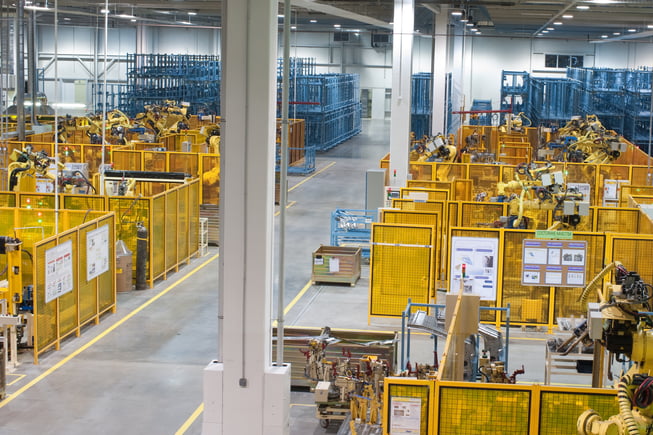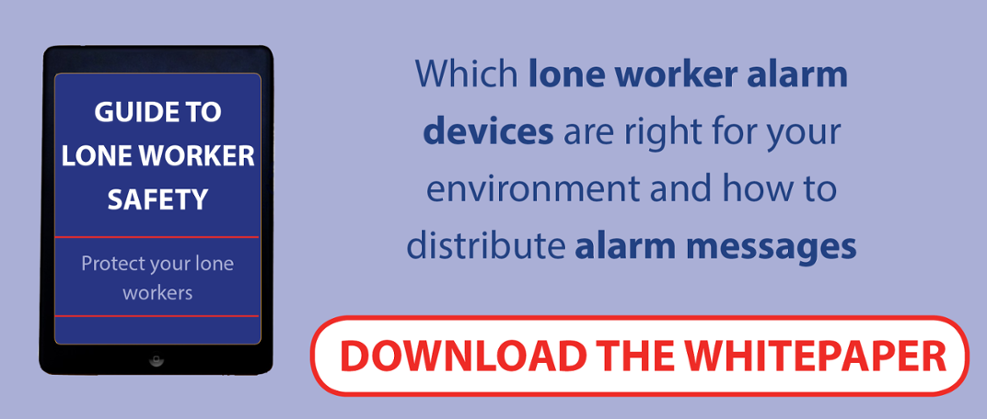
This guide could save lone workers' lives
Defining a lone worker
Anyone who works for a company, but spends at least part of their time working without a direct supervisor is how this kind of worker is generally defined. For example, a petrol station attendant working the night shift in a kiosk, or a security attendant responsible for a shop floor on a solo basis. But anyone who spends time on a site alone could be defined as one.
An office where only one employee is working that day, or manufacturing workers whose activities take them away from colleagues into isolated parts of a plant might take on this status, and it is important that thought is put into the practices of how to protect these staff members from coming to harm.
(See our Lone Worker Neglect, And The Penalty For This article for further information on employers' legal obligations.)
What are the risks associated with working alone?
Apart from regular hazards of a workplace, potential risks specific to working alone include:
- Accidents, injury, or illness where help is not immediately available
- Vulnerability to assault or robbery, such as when dealing with the public or cash sums
- Risks of becoming trapped in a confined space
- Difficulties carrying out tasks, e.g. heavy lifting, where more than one person might be more appropriate
- Travel fatigue, for example, driving long distances to transport goods or get to site. Spending nights alone, sleeping in the lorry.
This list is not exhaustive, and there can be less obvious consequences to working solo, such as boredom or loneliness which could bring about a drop in attention to detail, leading to potential dangers. The point is, working alone can have more risks than working in a group, but it should not. With care and thought, the risks can be minimised and the workplace made as safe as possible.
Strategies for controlling risk to lone workers
Risk assessment
Despite sounding like dull paper pushing, a risk assessment is important not just to cover the employer's liabilities, but also to inform the employee. If they are clear and cover all possible problem areas, workers can get a better picture of their role and how to keep themselves safe. In the meantime, employers can use the analysis of the risk situations to minimise their liabilities.
A risk assessment should be a relatively straightforward process – many templates exist to give a basic roadmap of how to proceed – but it may take a little imagination!
Risk assessment should think about scenarios with thought to any limitations workers may have, such as mobility, or injury, and even the degree of fluency in English.
Take into account previous issues with the workplace, such as past accidents, damaged or worn surfaces and safety features (like handrails or keycode pads), and make procedures for dealing with these problems, such as high visibility tape over things that shouldn't be used.
Some risks are not as immediately alarming, such as the risk of putting a back out through poor working practice. While perhaps not as frightening as other injuries, it can still cost the employee and employer in sick days, or lead to litigation, so should be considered carefully.
Degree of familiarity with the work location should also be accounted for, such as with temporary staff who might not have a clear view of procedures and hazards. This can be dealt with by training, as long as it is identified as a problem.
How much communication is there between staff and their supervisors? For example, how would a manager know that staff are at the worksite? Would they have a regular contact at the start or end of a shift? What is the system for informing of any problems? Is there oversight of alarms that have been triggered or a panic button to press in case of emergency? What happens if a person is rendered unconscious and how long would it take to realise they were missing and raise an alarm?
A risk assessment should have a table with the following headings or similar:
- Risk name
- Who is at risk of harm
- Current management procedures of this risk
- Further actions required
Then it should have columns for the names and dates of actions to manage the risks, when they should be done by, and their status of completion. Other column headings could be a rating of how hazardous the risk is or the likelihood of occurrence.
Training and communications
The most successful techniques for combatting risk have been reported as training and communications. Staff should feel comfortable and familiar with everything they are required to do, even when alone. If not, they should feel able to request extra training and to refuse anything they feel is dangerous without fear of penalty from their managers. Problems should be escalated as soon as they occur. Exit strategies should be prepared and practised in emergencies such as fire or hazardous material spillage.
Health and safety managers and team leaders should ensure that there is regular training, with updates and refresher courses in areas such as fire, hazardous materials handling, driver safety, how employees deal with the public, adherence to regulations, and how to use safety and security systems. Although it may seem like a waste of time to constantly check this, you will have visibility of any problems before they occur, and this could save lives. And not only this, but failure to do so could result in fines for failing HSE or NQA audits!
In terms of communication, ANT Telecom offer solutions that provide peace of mind for both employers and staff, giving dependable communications systems that can monitor staff and help them raise alerts in an emergency.
Using modern technology like this can dramatically reduce the labour of checking on isolated employees, and can combine the functions of several older systems into one.. They can also include smart monitors that can even tell if a worker has fallen. Effective communications like this not only help keep the team safe, but also prevents false alarms and keep production rates up. But most importantly, it can save lives!





